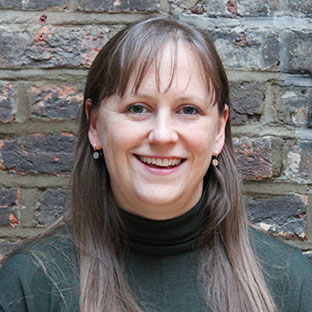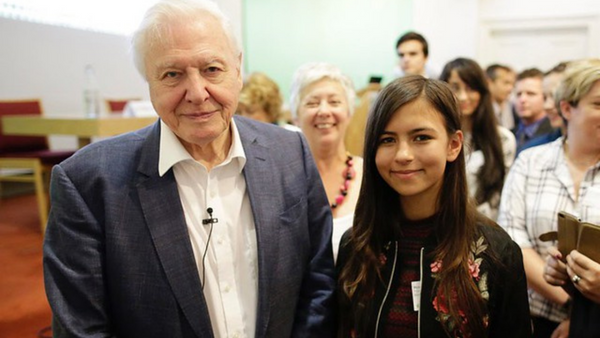Recently we held a roundtable at the RSA with the British Theatre Consortium on the theme of spectatorship and engagement. We explored the presumption that those working in the arts will increasingly need to justify public funding on the basis of being able to provide measurable benefits. This is easier to quantify when arts consumption involves direct participation, but as most arts experiences are non-participatory, we challenged, arts organisations will need to make spectatorship more engaging and active.
Artist: Alice Maggs
Once you dig under the surface, this becomes a complex subject. There is of course a difference between how institutions, particularly those with a building that needs to be regularly filled engage with their audiences, and how smaller organisations for whom participation is ‘the thing they do’, come to the table together on this subject. Many of this latter group feel that their work has not been recognised or appropriately valued (financially or otherwise); as the title of the recent conference from Connected Culture, the network that celebrates adult participatory arts, demonstrates. In choosing the name ‘Because we’re worth it’ they suggest a desire to change the perceptions around participatory arts whilst at the same time seriously grappling with the challenges of ‘genuine’ engagement and participation.
It would be really valuable to explore this place where arts participation and participatory arts meet.
It would be really valuable to explore this place where arts participation and participatory arts meet. Next time we should expose these hidden dichotomies, for it is all too easy to talk about artists and arts organisations as if they are homogenous. The State of the arts conference found this too. But the fact is that arts organisations are not all the same and we need to find a way of talking about these nuances otherwise the real nubs of the matter will remain ignored.
What should the starting point be? Leila Jankovich states that nearly 80% of those who participate in creative activity also attend arts events (according to the Taking Part survey). It is clear then that engagement of any kind may lead to a greater propensity to engage with other arts experiences in the future, ‘the challenge therefore is not the quality of what is engaged with, but with act of engagement itself’. This throws a challenge back to the Arts Council’s objective of ‘great art for everyone’. If our collective goal is a more enriched, open-minded and creative society perhaps there needs to be encouragement for all forms of participation in creative activity, irrespective of pre-conceived ideas of what is ‘quality’ or ‘great’.
One of the arts biggest challenges is raising its visibility, so the act of initial engagement is a really interesting one. Getting different sorts of people across the threshold can be a real challenge. There are interesting ways of thinking about this, the Birmingham Opera Company for instance, puts 50% of its tickets on sale to the general public (for those who know how to book in advance, have credit cards, are already going to go etc…) and the remaining 50% are distributed through the participants involved in the production. Contact Theatre place young people at the heart of everything they do. Their Future Fires project supports young emerging artists to plan and deliver their own community arts projects across Greater Manchester. Daniel Ainsworth is one such emerging artist. He is exploring with film and street art how extended periods of delayed re-development impact on a community’s day to day lives. He is inviting debate around the issues of displacement, unemployment and reduced local services in times of recession.
Daniel’s project sounds like it will enable the community of Miles Platting to articulate their thoughts and feelings about their situation in ways they perhaps didn’t know were possible which I think would appeal to Matthew Taylor’s assertion that we need to have a richer account of citizenship. This is an interesting thought because undoubtedly these accounts will vary significantly. If you ask someone what play they would like to see, they can only pick from a list of what they’ve already seen, people who have not had so many experiences in the arts do not know what the possibilities could be. For an account of citizenship to be truly rich we need to be engaged in many different ways and in many different forms.
From a policy and funding perspective, there is a significant challenge in how engagement and participation is measured.
From a policy and funding perspective, there is a significant challenge in how engagement and participation is measured. We lack a sophisticated way to represent depth of engagement and participation and in measuring the impact of this. You can have six people involved in project over three months and have a hundred people attend a final show. All 106 will go on to be counted as participants, yet the impact on these two groups and the individuals in them will be vastly different. If funding does drive the numbers game then those who engage with communities on a deeper level could be incentivised to lose these long term interventions and resulting relationships for quick, high volume wins – and what a loss this would be. But if the evidence from Taking Part is anything to go by then we need a scenario where all levels of engagement are encouraged – and then we need to have a better account of what it all means.
Related articles
-
Mya-Rose Craig: Featured Fellow Q&A
Mya-Rose Craig
Mya-Rose Craig is a 20-year-old birdwatcher, environmentalist and activist, author and RSA Fellow. Read our conversation with her as part of our Featured Fellow Q&A series.
-
Open call: Creative collaboration and collective imagination research
Hannah Webster Ella Firebrace
Learn more about the UNBOXED: Collective Futures open call; inviting you to submit what you are doing to help shape better futures for people and planet.
-
UNBOXED: The importance of unlocking collective imagination
Joanna Choukeir
Find out about UNBOXED: Creativity in the UK, why its mission is so important, and what you can expect to see.





Join the discussion
Comments
Please login to post a comment or reply
Don't have an account? Click here to register.
This is a great article. I live in the States, Georgia to be specific, and the ideas and issues that you discuss are extremely similar to the challenges i see here as well. Creating an atmosphere where the community feels empowered to create and participate in the arts is a wonderful thing. However, that type of atmosphere is not distinct. It will have to take on the characteristics of the community, assimilate with its surroundings, so an emotional connection can be created. The issue is an exciting one to debate